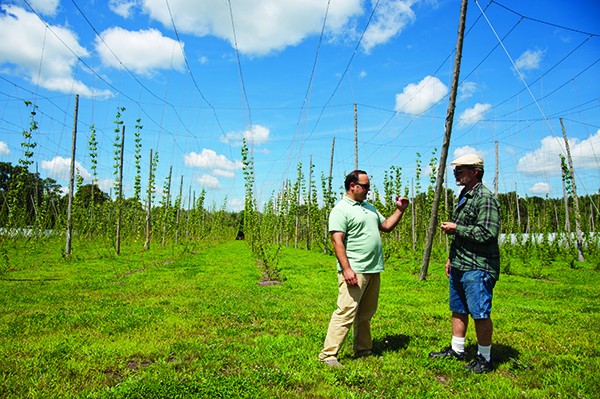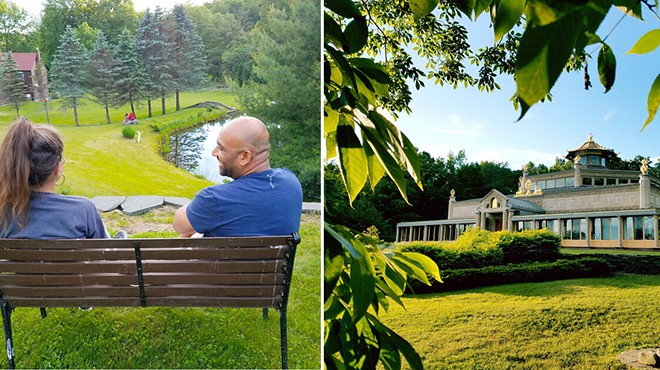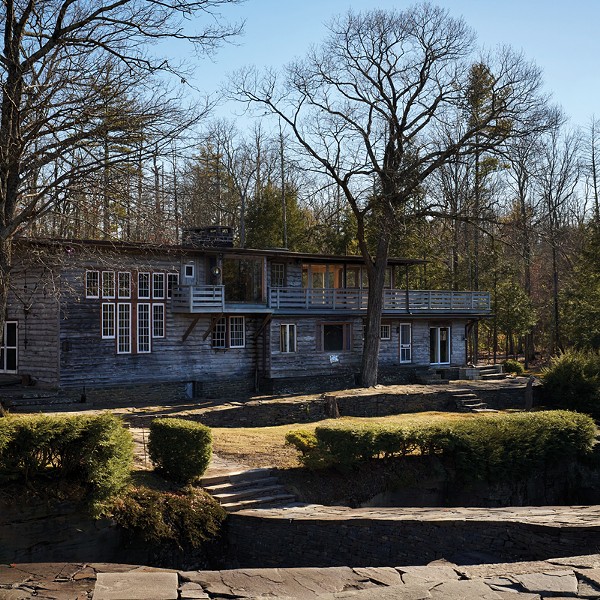Hops has a way of growing on people. In his five months as hop manager at Obercreek Farm in Hughsonville, Brad Nagle has "become obsessed with it."
"It's such an interesting plant," says Nagle, who had no hops or farm experience before he landed the job at Obercreek. "They're such fast growers, they're beautiful, and, of course, the end product is great."
The end product can also be very lucrative. Thanks to hop-friendly legislation, the growth of the local craft-beer industry and the obsession with all things farm-to-table, farmers can make more money growing hops than just about any other crop. The Hudson Valley now boasts at least 15 acres of hops, the small cone-shaped buds that determine a beer's flavor and aroma.
"It's really helping strengthen our economy," says Justin Riccobono, co-founder of Dutchess Hops in Lagrangeville and a consultant to other Hudson Valley hop startups. "We're saving farms and creating jobs, we're creating a locally produced craft beer, and we're creating a real interest in tourism. More and more people are coming here to tour the beer trail and the hop yards. The beer revenue is winding through the Hudson Valley."
Dried Hudson Valley hops commands between $12 and $18 a pound—compared to $7 to $13 for Pacific Northwest hops. "The revenue is there to make $20,000 per acre," Riccobono says. By comparison, corn yields revenue of about $800 an acre, and hay even less.
Hudson Valley Terroir
Responding to a wave of interest across the state, nonprofit groups are hosting workshops on hop growing, supplying hop plants and other materials, and providing costly harvesting and drying equipment. Next month, the Carey Institute for Global Good plans to launch a model farm brewery on its Rensselaerville campus to help aspiring brewers learn the trade and connect with local hop farmers.
Hops picks up flavor from the soil where it is grown just as the taste of wine grapes differs by region. The New York terroir is characterized by more citrus and spice than its West Coast counterparts, and Hudson Valley farmers are finding that local breweries and homebrewers will pay a premium for the taste and imprimatur. Dutchess Hops, for instance, has a signature hops called AlphAroma that goes for $15 a pound.
August and September are hop harvest season, a busy time for Riccobono and the other Hudson Valley farmers who have planted hops over the past few years.
Pennings Farm in Warwick added an acre of hops three years ago after seeing strong sales of its own hard apple cider and local craft beer and wine at the pub that the farm opened in 2010. "It's a natural progression to make our own beer," says co-owner Steve Pennings. Michael Antonelli, and his wife, Alva, planted an acre and a half of hops on their Walden farm to supplement their income when they retire. They hope to open a farm brewery.
A Growing Concern in New York
The state's 2012 farm brewery initiative allows craft breweries to sell beer by the glass in their tap rooms as long as 20 percent of their ingredients come from the state (rising to 60 percent in 2019 and 90 percent in 2024). As a result, there are now 58 licensed farm breweries in the state, the number of microbreweries has more than doubled to 103, and demand for local hops has surged, along with a thirst for information.
In 1880, New York State was the largest producer of hops in the country with 40,000 acres, mostly between Syracuse and Cooperstown. A mildew epidemic, followed by Prohibition, put the kibosh on the industry. The Pacific Northwest—Washington, Oregon, and Idaho—emerged as the leader in hop production and currently corners 98 percent of the market. But New York is resurging, with some 250 acres under cultivation—up from just 15 four years ago—making it the fifth-largest hop producer in the nation, according to the Hop Growers of America. Today, hop farms are spread out across New York State. While hop yards of 100 acres or more are common in the Pacific Northwest, few New York State growers have more than 10 acres. In the Hudson Valley, Dutchess Hops, at four acres, is the largest operation.
"The amount of hops acreage in the state is probably going to double every year," says Samuel Filler, liaison to the beer, wine, and cider industry for Empire State Development, New York's chief economic-development agency.

















